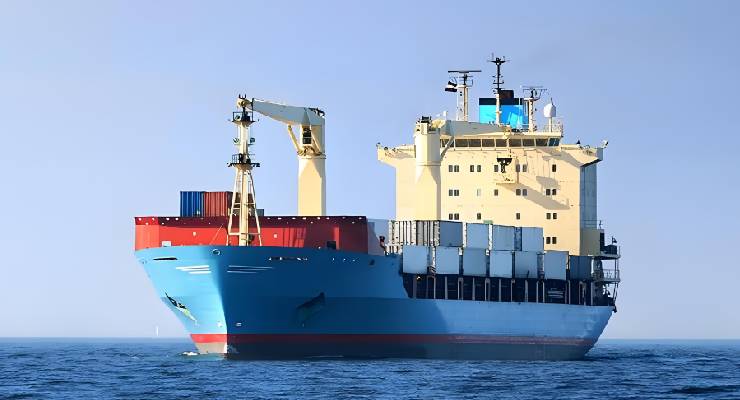
The growth of the global wine market has led to an increase in demand for wine transportation, providing a way to obtain various wines from around the world. However, due to the subtle nature of wine, it faces significant challenges in transportation, and exporters must address these complexities. Winsail has expertise in wine transportation and can be a trusted partner to overcome these challenges. Come and consult Winsail for a seamless wine transportation experience.
This article will help you understand all the information about transporting wine from China, allowing you to confidently navigate the wine transportation process.
Understanding the Basics of Wine Shipping
Transporting wine may seem simple, but it requires mastering some key foundational knowledge to ensure that your wine arrives safely and legally at its destination. In this article, we will explore the basics of wine transportation to help you get started.
1. International transportation
International transportation: If you transport wine across borders, you will encounter more complex regulations, including customs, tariffs, and import and export requirements. Understanding these rules is crucial for avoiding legal issues and delays.
2. Types of wine suitable for transportation
Not all wines are equally suitable for transportation. Some wines are more elastic and can withstand harsh transportation. When transporting wine, please consider:
Durable wines: Strong red wines, sparkling wines, and sweet wines are often suitable for travel due to their thicker glass and higher alcohol content. They are unlikely to be affected by temperature fluctuations.
Fragile wine: Exquisite white wines, especially those with lighter bottles, may be more susceptible to damage during transportation. Special care is required when transporting these wines.
Packaging Your Wine for Safe Shipping
Proper packaging is a crucial aspect of shipping wine safely. Wine bottles are fragile and can easily break during transit if incorrectly packaged. Here’s a simple guide on how to package your wine securely:
1. Selecting Appropriate Wine Packaging Materials
· Wine Bottle Boxes: Use sturdy, corrugated cardboard wine bottle boxes designed to hold wine securely. These boxes typically have dividers to keep bottles separate and cushioned.
· Bubble Wrap or Foam Inserts: Wrap each bottle individually with bubble wrap or insert foam sleeves to protect them from impact and temperature fluctuations.
· Sealing Tape: Use strong packaging tape to seal the boxes securely. Reinforce the bottom and top flaps of the box with extra tape for added stability.
2. Step-by-Step Guide to Safely Packing Wine Bottles
· Place a layer of cushioning material (bubble wrap or foam) at the bottom of the wine box.
· Insert the wine bottles individually, ensuring they fit snugly in the compartments without touching each other. Use extra cushioning material between bottles if necessary.
· Fill empty spaces in the box with more cushioning material to prevent movement during transit.
· Close the box and seal it with tape. Make sure it’s well-sealed to prevent any accidental openings.
3. Tips for Preventing Damage During Transit
· Label the box as “Fragile” or “Handle with Care” to alert handlers to the delicate contents.
· Avoid shipping wine in extreme temperatures, as temperature fluctuations can damage the wine. Consider choosing a carrier that offers temperature-controlled shipping options.
· Track your shipment to monitor its progress and be prepared to receive it promptly upon delivery.
By following these simple steps and investing in suitable packaging materials, you can significantly reduce the risk of your wine bottles breaking or getting damaged during shipping. Remember that safe packaging is essential to ensuring that your wine reaches its destination in perfect condition.
Labeling and Documentation for Wine Shipping
Labeling and documentation are important aspects of wine shipping, ensuring your shipment complies with regulations and reaches its destination smoothly. Here’s a simple overview of what you need to know:
Labeling Requirements for Shipping Wine
1. Shipping Labels: Clearly label your package with the recipient’s address and contact information. Include your return address as well.
2. Fragile or Handle with Care: To prevent mishandling, mark the box as “Fragile” or “Handle with Care.” This alerts carriers to the delicate nature of the contents.
3. Wine Labels: Ensure each bottle has a legible wine label with essential details such as the winery name, wine type, vintage year, and alcohol content. This information helps customs and recipients identify the wine.
Preparing the Necessary Documentation
· Invoice or Receipt
· Customs Forms
· Importer’s or Recipient’s Information
· Age Verification
· Carrier Requirements
By adhering to these labeling and documentation guidelines, you can help ensure that your wine shipment complies with legal requirements and reaches its destination without unnecessary delays or issues.
Legal and Compliance Considerations for Wine Shipping
When shipping wine, it’s vital to understand and adhere to legal and compliance requirements to avoid legal issues and ensure a smooth shipping process. Here’s a simple overview of these considerations:
1. Age Verification and Wine Shipment Laws
· Age Verification: Most countries and regions have strict laws regarding the legal drinking age. It’s crucial to verify that the recipient of the wine shipment is of legal drinking age in their location. Failure to do so can result in legal consequences.
· Local Laws: Be aware of the laws and regulations governing the sale and shipment of alcohol in your country and the destination. These laws can vary significantly, so understanding them is essential.
2. Licensing and Permits for Wine Shipping
· Some regions require businesses to obtain specific licenses or permits to ship alcohol, including wine. Ensure you have the permits before shipping wine, especially if you do it as part of a commercial venture.
3. Taxes and Duties
· Be prepared to pay any applicable taxes and duties related to domestic and international wine shipments. Failure to do so can result in customs delays and additional fees.
4. Record-Keeping
· Maintain detailed records of your wine shipments, including invoices, shipping documents, and any permits or licenses. These records may be required for auditing or compliance purposes.
By staying informed about legal and compliance considerations, you can ensure that your wine shipments are safe and in full compliance with the law. If you have any doubts or questions about the legal requirements for shipping wine, consider seeking legal counsel or consulting with experts in the field to avoid potential issues.
-
 A Comprehensive Guide to Refrigerated ContainersJun 17,2025
A Comprehensive Guide to Refrigerated ContainersJun 17,2025 -
 Guide to 20ft & 40ft Shipping Container Dimensions for Global LogisticsJun 17,2025
Guide to 20ft & 40ft Shipping Container Dimensions for Global LogisticsJun 17,2025 -
 How to track shipments sent from ChinaMay 13,2025
How to track shipments sent from ChinaMay 13,2025 -
 Guide to Importing and Shipping Cars from China to UAEMay 13,2025
Guide to Importing and Shipping Cars from China to UAEMay 13,2025 -
 Guide to Importing and Shipping Camping Gear from ChinaMay 07,2025
Guide to Importing and Shipping Camping Gear from ChinaMay 07,2025 -
 Shipping from China to YemenMay 06,2025
Shipping from China to YemenMay 06,2025

